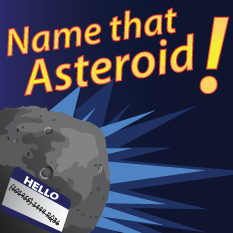NES educator Michael Lewis says things are really “taking off” in his technology class at Skiatook High School in Oklahoma. Every Friday is “NASA Friday.” On those days, Lewis will be using a variety of student lessons and activities provided by NASA and NASA Explorer Schools. His students will study, research and create various technology experiments in the same way scientists at NASA do. Students will use critical thinking, analysis, observation, experimentation and communication to solve the same kinds of problems astronauts and those in the aerospace industry face every day.
This school year, Lewis’ students have already made remote-launching vehicles. This activity helped them better understand the challenges NASA faced in launching and landing the scientific rover Curiosity, which landed on the planet Mars in August. The class also has discussed the tensile strength of various metals and organic products when under pressure. The students then divided into different teams to see which group could build the tallest structure using a common set of construction materials, spaghetti and marshmallows. One team built a 106.7-cm tall structure based on the triangle shape!
Link to the NES Virtual Campus home page.
![]() Your challenge, should you choose to accept it, is to become the next scientist, engineer or mathematician who will help us understand more about our place in the universe.
Your challenge, should you choose to accept it, is to become the next scientist, engineer or mathematician who will help us understand more about our place in the universe.
 Date: Sept. 25, 2012
Date: Sept. 25, 2012 Students worldwide have an opportunity to name an asteroid from which an upcoming NASA mission will return samples to Earth. Scheduled to launch in 2016, the mission is called the Origins-Spectral Interpretation-Resource Identification-Security-Regolith Explorer, or OSIRIS-REx. The competition is open to students under age 18. Each contestant can submit one name, up to 16 characters long. Entries must include a short explanation and rationale for the name. The contest deadline is Dec. 2, 2012.
Students worldwide have an opportunity to name an asteroid from which an upcoming NASA mission will return samples to Earth. Scheduled to launch in 2016, the mission is called the Origins-Spectral Interpretation-Resource Identification-Security-Regolith Explorer, or OSIRIS-REx. The competition is open to students under age 18. Each contestant can submit one name, up to 16 characters long. Entries must include a short explanation and rationale for the name. The contest deadline is Dec. 2, 2012.